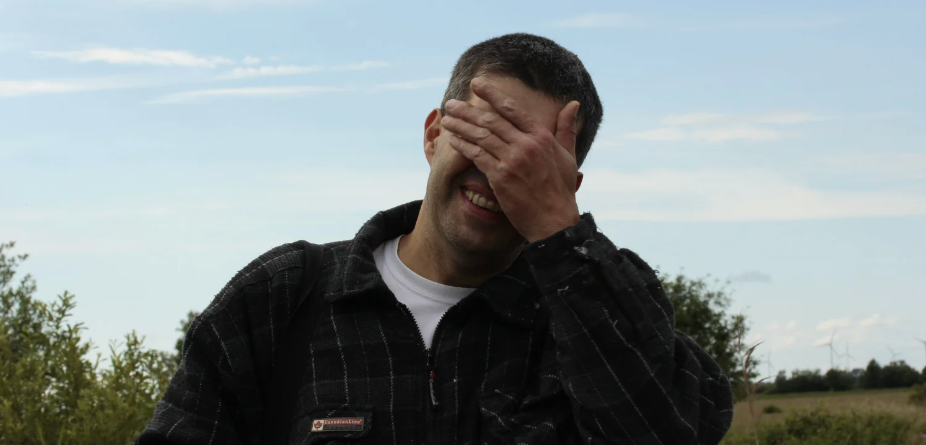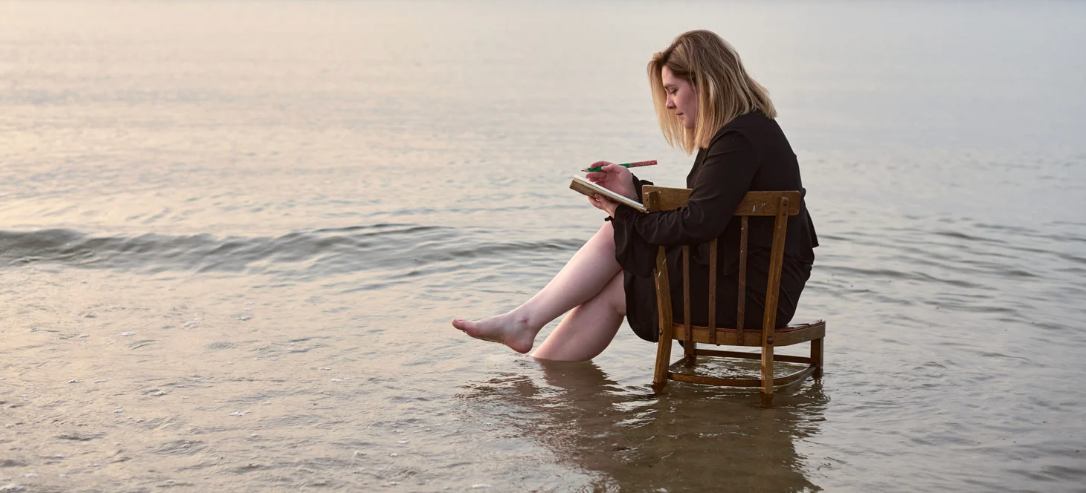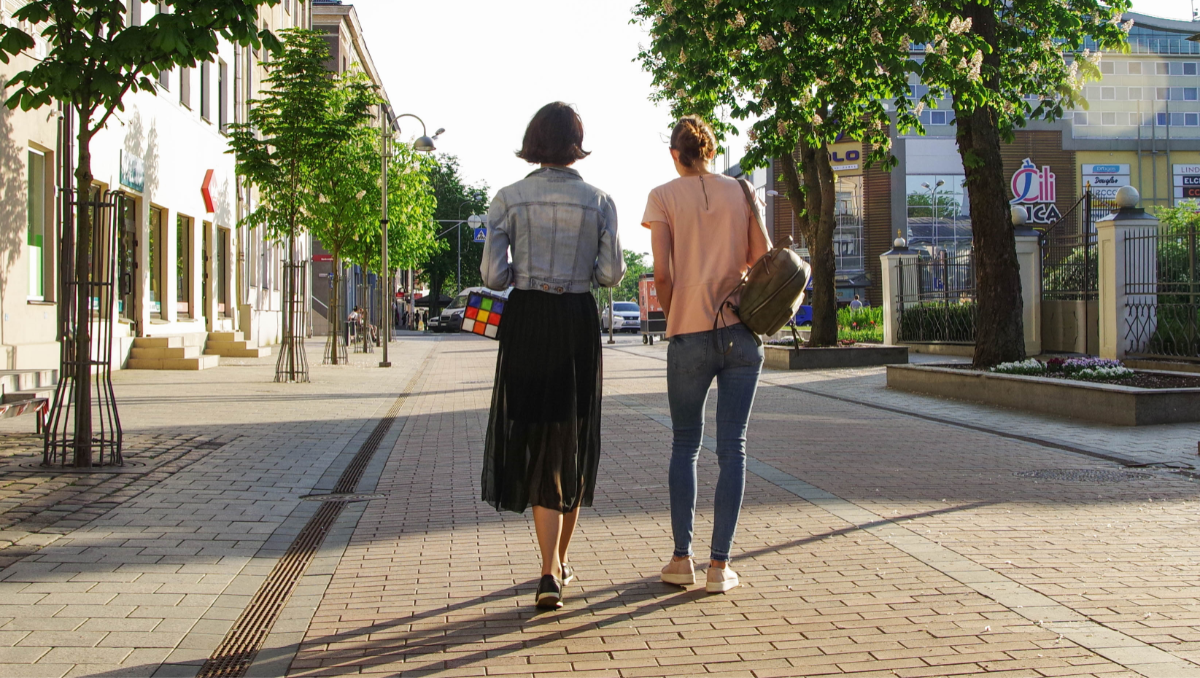If you were tasked with ending hunger by 2030, what would you do? For starters, you'd probably come up with as many solutions as possible — as fast as possible.
That's exactly what the World Food Programme (WFP) is doing. And they're asking for all the help they can get.
When it comes to feeding the 795 million people living in hunger every day, time is of the essence. Solutions are needed — fast. And the best way to come up with out-of-the-box solutions? Out-of-the-box ideation.
That's where the Innovation Accelerator comes in.
All images via the Innovation Accelerator, used with permission.
Established in 2015 in Munich, Germany, the program has a simple mission: "Finding the bright minds, getting them together with the right partners, and actually making ideas happen," explains Bernhard Kowatsch, head of the Innovation Accelerator. "With doing all of that, we can make zero hunger a reality by 2030."
They fast-track ideas by providing intensive training, funding, and even coaching from the industry's best and brightest. Think of them as a startup incubator, only their main goal is addressing global hunger.
Here are the 15 game-changing projects that the Innovation Accelerator is working on right now:
1. ShareTheMeal lets you donate meals to kids in need for just $0.50.
To date, they've delivered over 11 million meals (and counting) to kids in Malawi, Lebanon, Syria, and other places.
2. Locals are being taught how to use hydroponics to grow crops in the slums of Peru.
Hydroponics uses nutrient solutions to grow produce without soil. The best part? The families are teaching other families the technique on their own.
3. Nutrifami makes healthy eating fun for Colombians.
Nutrifami engages food-insecure families with fun online games and activities focused on smart purchasing and building healthier habits day by day.
4. MAPS tracks the nutritional progress of people in El Salvador.
The Monitoring App for Social Programmes (MAPS in its Spanish acronym) gives officials real-time access to data so they can reduce malnutrition more quickly in vulnerable communities.
5. The Food Computer is creating recipes out of climate in Jordan.
The Food Computer can control climate variables like humidity and carbon dioxide inside a special growing chamber, allowing researchers to test any location's conditions and let farmers know what crops will grow best.
6. The WFP is using satellites to monitor their revamped food infrastructure in South Sudan.
Image via iStock.
To monitor the progress of building new water resources and repairing roads, the WFP is using satellite imagery so they have a trusty eye in the sky.
7. Transformers is transforming food waste into school food in Kenya.
They're taking surplus food headed for the landfill and turning it into hot, balanced meals for schoolchildren.
8. Farmers in Africa are being taught how to care for their bounty better.
The Zero Post-Harvest Losses initiative teaches farmers modern harvesting techniques and provides them with airtight storage silos to prevent crop loss.
9. The smartphone app AgriUp is giving Guatemalan farmers the knowledge they need to be successful.
AgriUp provides farmers with tools such as weather reports, farming advice, and nutrition tips so they can improve their food security, as well as the local economy.
10. Building Blocks is changing how aid is delivered in Pakistan.
Building Blocks is taking out the middle man and creating a cheaper, quicker, and more direct money transfer, perfect for delivering aid faster and safer.
11. Real-time data is preventing stunted growth in infants.
Adaptive Programming uses real-time data on the health of citizens in order to come up with more accurate care and to help prevent conditions such as infant stunting.
12. The Virtual Farmers Market (VFM) in Zambia is connecting farmers and buyers like never before.
Using the same approach that has made apps like Airbnb and Lyft so successful, VFM is an online marketplace that lets farmers expand their reach, improve profits, and boost the local economy.
13. These Syrian refugees are learning digital skills and creating food security in the process.
Tech for Food teaches refugees digital skills such as photo editing so they can work from anywhere in the world, improving their livelihood and putting food on the table.
14. Smart Meals is changing how school food is delivered in Burundi.
School food kept running out way before the next delivery, so the Smart Meals project revamped the entire inventory system to make it more user-friendly and to ensure food gets delivered on time, every single school day.
15. The power of storytelling is opening people's eyes.
Through firsthand stories, the WFP's ZeroHunger Stories project is creating a more personal connection to their causes and getting people to better understand the importance of taking action immediately.
We need to work concisely, quickly, and as one if we're going address this global issue sooner rather than later.
Yes, it's an uphill climb, but let's not forget, the end goal of zero hunger by 2030 is right within our sight. "If we broaden the network of people that care about hunger and are willing to support it," adds Kowatsch, "it's even easier and more realistic that we will make that happen."
In fact, if you have your own idea for addressing world hunger, submit it to the Innovation Accelerator by March 14 to help make their vision a reality.
- Why the World Food Programme's 2020 Nobel Peace Prize is totally deserved - Upworthy ›
- Collection of recipes from around the world aims to raise awareness about food insecurity ›
- The Numbers Are In: Over 238 Million Dollars was raised for a massive relief fund - Upworthy ›
- The Numbers Are In: Over 238 Million Dollars was raised for a massive relief fund - Upworthy ›
- The numbers are in: more than $238 million was raised for a massive relief fund - Upworthy ›
- The numbers are in: more than $238 million was raised for a massive relief fund - Upworthy ›
- Lyft providing free rides to help low-income people get to job interviews - Upworthy ›
- 'The Greatest Night in Pop' documentary is a must-watch - Upworthy ›




 Newborn's first cry marks a fresh beginning.
Newborn's first cry marks a fresh beginning. Newborn baby.
Newborn baby.


 Woman in denim jacket covers face with sleeve, standing outdoors with blurred background.
Woman in denim jacket covers face with sleeve, standing outdoors with blurred background. Woman with outstretched arms in a sunlit field, enjoying the outdoors.
Woman with outstretched arms in a sunlit field, enjoying the outdoors. Lush forest with vibrant green and orange foliage in soft, misty sunlight.
Lush forest with vibrant green and orange foliage in soft, misty sunlight. Friends laughing and drinking coffee at a cozy cafe table.
Friends laughing and drinking coffee at a cozy cafe table. Woman with curly hair in sunlight, eyes closed, wearing a purple top.
Woman with curly hair in sunlight, eyes closed, wearing a purple top. Man smiling with hand over face, standing outdoors against a blue sky background.
Man smiling with hand over face, standing outdoors against a blue sky background. Hand painting a still life on canvas with blue and orange tones.
Hand painting a still life on canvas with blue and orange tones. Woman sitting on a chair in the water, writing in a notebook at sunset.
Woman sitting on a chair in the water, writing in a notebook at sunset.
 Women walking down a street.Image via Canva Photos.
Women walking down a street.Image via Canva Photos.  Woman aware of her surroundings in a parking garage. Image via Canva Photos.
Woman aware of her surroundings in a parking garage. Image via Canva Photos.
 "You're hilariously brilliant at everything you hate."
"You're hilariously brilliant at everything you hate."  "Bridget is authentically herself…and triumphs in her own way."
"Bridget is authentically herself…and triumphs in her own way."  "They're written in some curious language that I can't really understand."
"They're written in some curious language that I can't really understand."